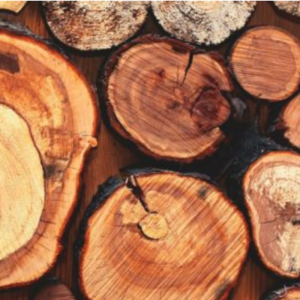
How Can Aquaculture Protect Our Oceans?
| Fri, 07 Aug 2020 - 16:44
Background of SDGs
In 2015, United Nations (UN) member states convened and agreed upon 17 goals known as the Sustainable Development Goals (SDGs). These goals are designed to guide citizens of the planet in a direction that will support future generations of people and animals to live and meet their respective needs in the face of a changing climate. The UN describes the SDGs as “an urgent call for action by all countries – developed and developing – in a global partnership. They recognize that ending poverty and other deprivations must go hand in hand with other strategies that improve health and education, reduce inequality and spur economic growth – all while tackling climate change and working to preserve our oceans and forests.”
What does this goal mean? Why is it important?
The fourteenth Sustainable Development Goal is likely the one that is most outwardly associated with aquaculture and the seafood space – it’s all about life below water. The aim of SDG 14 is to conserve and sustainably use the oceans, seas and marine resources for sustainable development.

Human life could not carry on without healthy oceans and seas. Naturally, since over 70 percent of our planet is covered in them, we rely on bodies of water for a plethora of things; namely food, energy and water. Despite how desperately we need to keep oceans and seas functioning well, pollution and unsustainable fishing practices have damaged natural ecosystems. Responsible management of the resources oceans provide us is the first step in accomplishing Goal 14.
There are quite a few components and targets which are a part of this goal. Target categories are the measurable factors pointing to progress made toward the goal. Reducing marine pollution and protecting/restoring ecosystems are top priority, along with reducing ocean acidification, sustainable fishing, conserving coastal and marine areas, and increasing the economic benefits from sustainable use of marine resources. Other targets are increasing scientific knowledge, research and technology for ocean health, supporting small scale fishers, and implementing international sea law.
Over three billion people depend on marine and coastal biodiversity for their livelihood – we must prioritize Goal 14 not only for environmental concerns, but also social.
How does aquaculture measure up?

Photo courtesy of Innovasea
Aquaculture directly relates to a few of the targets for Goal 14. Aquaculture does and will continue to play a role in increasing economic benefits from sustainable use of marine resources, along with fisheries and tourism, particularly in small island states and nations with up-and-coming economies. Fish farming is a livelihood that has proven to be attainable for many rural and coastal communities.
As hard as it is to admit, there is a limit of fishing resources. There are only so many fish in the sea (there are a lot, as the saying goes, but only a finite amount!). As we approach that limit with available fisheries, aquaculture can work as a supplement to feed the world’s ever-growing population.
At GAA, we simply want people to eat more seafood – and since there is not enough seafood available for the world solely through fisheries, we view aquaculture as the way to make seafood more accessible to everyone. Fish farms can be created almost anywhere – in coastal waters, in ocean net pens, even on land in recirculating aquaculture systems.

So far, much progress has been made for the betterment of life below water – 87 countries have signed the agreement on port state measures, which is the first binding international agreement on illegal, unreported and unregulated fishing. More good news is that 47% of coastal regions worldwide have improved their water quality between 2012 and 2018. Efforts to reduce marine pollution are proving to be successful.
Additionally, as fishery and marine management have become more widespread, there is evidence that proper management has contributed to the recent resurgence of natural fisheries such as rockfish on the west coast of the US and the bluefin tuna in the UK.
How do GAA/BAP apply?
Our mission at GAA is to educate about, advocate for, and demonstrate responsible aquaculture practices. We hope to inspire and empower the world to eat responsibly farmed seafood – and seafood as a whole. With that as our mission, many facets of what we do aligns with Goal 14.

Our annual Global Outlook for Aquaculture Leadership (GOAL) conference provides a space for the aquaculture industry to come together and discuss how to move the industry forward – it provides a platform for progress and sustainable practices. Each year at GOAL, we host the Global Aquaculture Innovation Award to recognize individuals and companies finding new solutions to key challenges facing aquaculture. This supports Goal 14, as well.
Learn more about this year’s virtual GOAL!
GAA’s sister organization, Global Seafood Assurances, was created to provide high quality, end to end, fully traceable assurance for seafood. GSA supports the sustainable development of global production while also protecting people and planet – all of which is at the heart of Goal 14.
Finally, a lot of the targets for Goal 14 involve environmental impacts – pollution, ocean acidification, unsustainable practices, etc. The environmental responsibility standard under the Best Aquaculture Practices certification program audits aquaculture facilities’ effluent and other environmental impacts to ensure that the farm is not harming its surroundings.
Conclusion
There is much work to be done to accomplish the goal of conserving and sustainably using the oceans, seas and marine resources for sustainable development. However, things are on the right path through initiatives like the the agreement on port state measures, strict fishery regulations, and more fish farms popping up in rural, less developed areas. Aquaculture can work hand in hand with fisheries and regulators to help reach all of the targets for Goal 14.
Source: Aquacultureallience.org






















